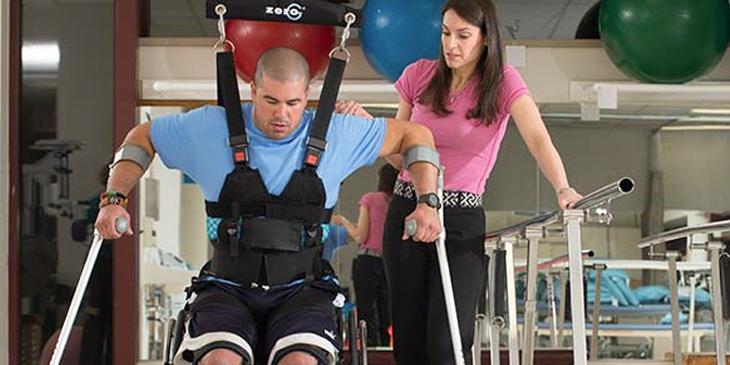
The landscape of rehabilitation for spinal injury patients in Houston is undergoing a significant transformation, thanks to recent advancements in physical therapy. These developments enhance recovery speeds and fundamentally improve how patients regain function and quality of life. As therapy techniques and technologies evolve, they bring new levels of hope and potential for those affected by spinal injuries.
Access to these innovative therapies often requires substantial financial resources. This is where specialized legal support becomes indispensable. The spinal cord injury attorneys serving Houston are crucial in ensuring patients can afford cutting-edge treatments by helping them secure the compensation they deserve. Their expertise in navigating the legal system is vital for patients to benefit from the latest rehabilitative care.
Innovations in Physical Therapy Techniques
Recent breakthroughs in physical therapy have ushered in a new era of rehabilitation for spinal injury patients in Houston. One of the most promising developments is robotic-assisted therapy, which uses robotic devices to support movement and strengthen muscles while minimizing the risk of injury during rehab. Additionally, virtual reality (VR) interventions are becoming increasingly popular. VR provides immersive environments that encourage patients to engage in simulated physical activities that can improve motor skills and enhance neurological recovery.
Neuroplasticity-focused exercises represent another frontier in spinal injury rehabilitation. These exercises help the brain and spinal cord adapt to injury by forming new neural connections, potentially restoring function and movement even when significant damage occurs. Such therapies emphasize the brain’s ability to relearn and adjust, offering hope for recovery that was once considered unachievable.
Integrating Technology in Rehab
The integration of advanced technology into rehabilitation practices is significantly enhancing the recovery process for spinal injury patients. Exoskeletons are a prime example of this technology. These wearable devices support individuals with mobility impairments, enabling them to stand and walk. Profound psychological benefits complement the physical support exoskeletons provide as patients experience improvements in mobility and independence.
Electrical stimulation devices represent another vital technological advancement in rehabilitation. These devices activate nerve pathways that may have become inactive after an injury. By stimulating these nerves, the devices help to strengthen muscles and improve coordination, crucial components in the recovery of motor functions.
Customized interactive software further refines rehabilitation by offering therapy routines tailored to each patient’s progress and needs. This software tracks real-time improvements and adjusts exercises based on the patient’s progress. This adaptive approach maximizes the effectiveness of each therapy session and helps keep patients motivated and engaged, crucial for sustained recovery efforts.
Role of Multidisciplinary Teams
A multidisciplinary approach is crucial in the rehabilitation of spinal injury patients. This strategy brings together lumbar spinal stenosis specialists in Houston, each focusing on different aspects of patient recovery. Physical therapists work on restoring physical function through mobility exercises, while occupational therapists assist patients in relearning daily activities to promote independence. Neurologists monitor the medical and neurological status, guiding therapy based on the patient’s neurologic recovery, and psychologists address the mental health challenges that often accompany traumatic injuries.
This team synergy ensures a holistic treatment plan that covers all dimensions of recovery, making it possible to tailor rehabilitation strategies as comprehensive as they are specific to each patient’s needs.
Case Studies: Success Stories from Houston
The profound impact of advanced rehabilitation technologies in Houston is best illustrated through real-life success stories. These examples showcase modern therapies’ effectiveness and emphasize the importance of timely and personalized treatment plans. Here’s a closer look at some notable cases:
- Robotic-Assisted Therapy and Neuroplasticity Exercises: A patient with a severe spinal injury experienced significant mobility improvements after combining robotic-assisted therapy with neuroplasticity exercises. This integrated approach helped the patient retrain their nervous system to function more effectively, demonstrating the transformative potential of combining multiple therapeutic modalities.
- Exoskeleton Usage: Another inspiring case involves a young adult confined to a wheelchair for several years. With the help of an exoskeleton, this individual could take their first steps independently. This milestone marked a significant personal achievement and highlighted the exoskeleton’s role in supporting physical movement and enhancing patient confidence and independence.
These cases from Houston provide concrete examples of how innovative therapies are changing lives by restoring function and improving the quality of life for individuals with spinal injuries. Each story is a testament to the advancements in medical technology and the tailored approaches that make such recoveries possible.
The Future of Spinal Rehab in Houston
The landscape of spinal rehabilitation in Houston is set for significant advancements, promising more effective and accessible treatments for patients. Here’s a brief look at the prospects:
- Advanced Therapy Techniques: Innovations like augmented reality training and genetically targeted therapies are poised to enhance the precision and effectiveness of rehabilitation.
- Increased Accessibility: Efforts are being made to ensure all patients can access cutting-edge treatments, including advocating for better insurance coverage and funding models.
- Collaborative Research and Innovation: Enhanced partnerships between healthcare institutions and tech companies are expected to accelerate the development and application of innovative therapies.
- Patient-Centered Approaches: There is a growing focus on care models prioritizing each patient’s needs and recovery goals, ensuring treatments improve overall quality of life.
The Impact of Legal Support on Access to Rehab
Legal advocacy plays a crucial role in ensuring spinal injury patients can access advanced therapies, many of which come with high costs not always covered by standard insurance policies. Without the proper legal support, patients may struggle to afford these essential treatments that significantly enhance their recovery prospects.
In Houston, skilled spinal injury lawyers dedicate themselves to negotiating and securing settlements encompassing the full range of necessary treatments. This includes funding for cutting-edge physical therapies that might otherwise be inaccessible due to financial limitations. Their expertise in navigating insurance and legal matters is vital for overcoming these financial barriers.
By securing adequate compensation, these attorneys ensure that spinal injury patients receive the best possible care without the added stress of how to afford it. This legal support is indispensable, as it facilitates access to top-tier rehabilitation technologies and helps patients focus entirely on their recovery journey, knowing their financial and legal concerns are being expertly managed.





